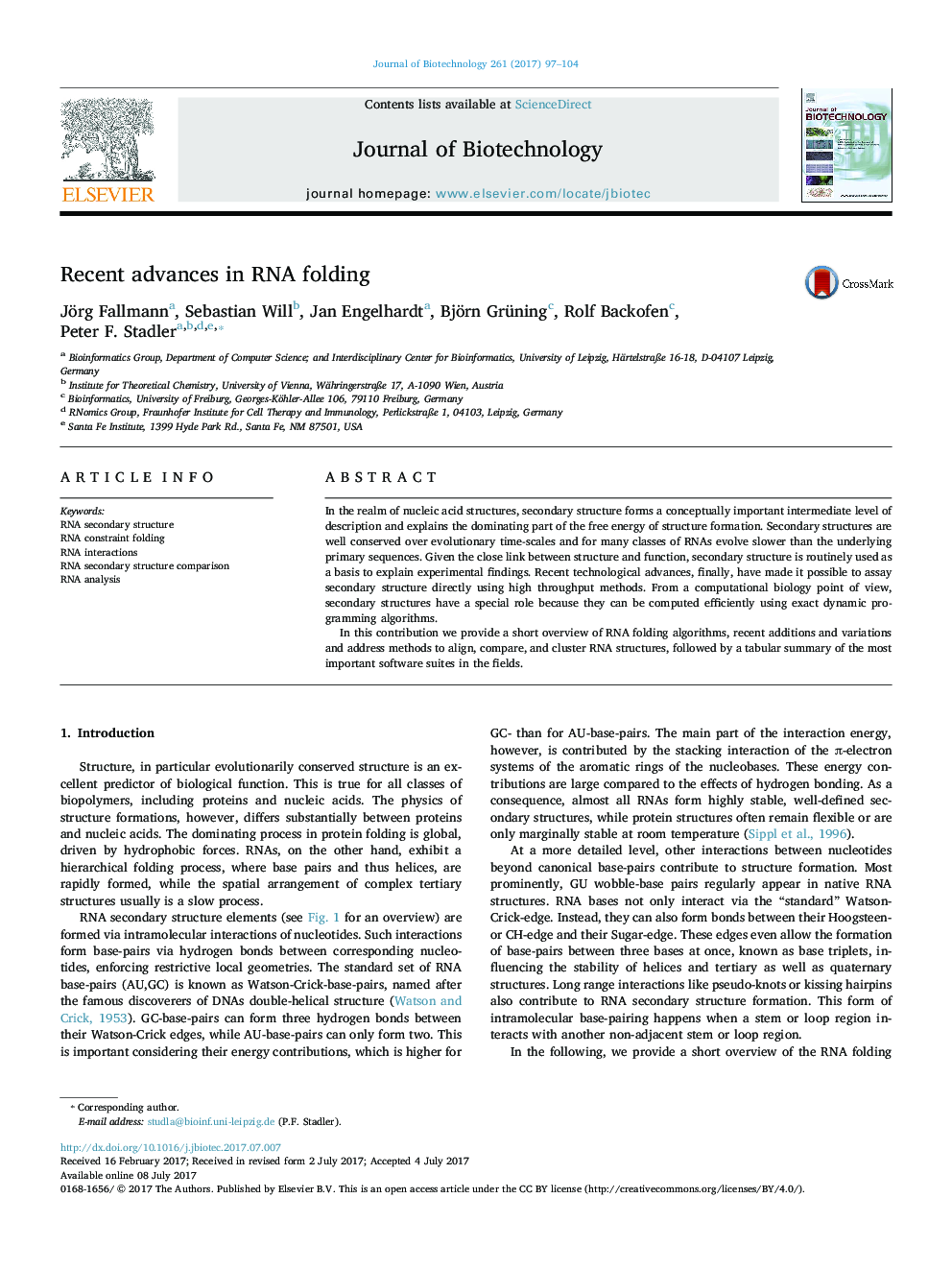| Article ID | Journal | Published Year | Pages | File Type |
|---|---|---|---|---|
| 6451843 | Journal of Biotechnology | 2017 | 8 Pages |
â¢Recent advances in computational techniques to predict, analyze, and compare RNA secondary structure are reviewed.â¢Review of RNA folding with constraints and RNA interaction prediction methods.â¢Tools and suites for RNA analysis.
In the realm of nucleic acid structures, secondary structure forms a conceptually important intermediate level of description and explains the dominating part of the free energy of structure formation. Secondary structures are well conserved over evolutionary time-scales and for many classes of RNAs evolve slower than the underlying primary sequences. Given the close link between structure and function, secondary structure is routinely used as a basis to explain experimental findings. Recent technological advances, finally, have made it possible to assay secondary structure directly using high throughput methods. From a computational biology point of view, secondary structures have a special role because they can be computed efficiently using exact dynamic programming algorithms.In this contribution we provide a short overview of RNA folding algorithms, recent additions and variations and address methods to align, compare, and cluster RNA structures, followed by a tabular summary of the most important software suites in the fields.
